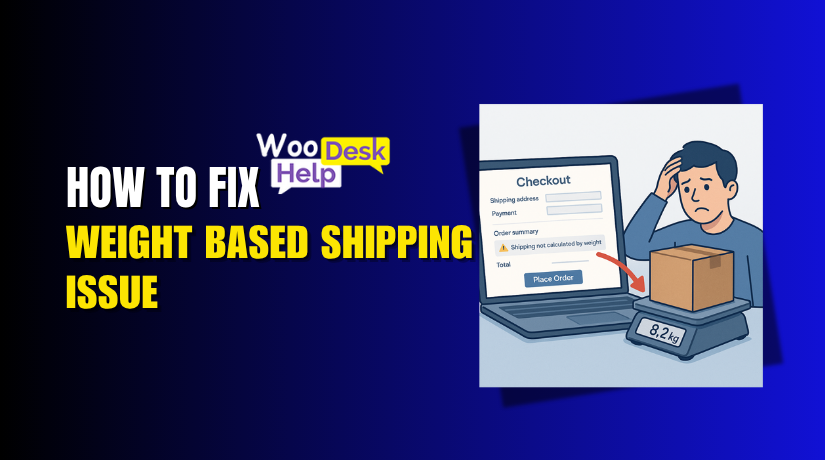
WooCommerce Refund Email Notification Not Received? Here’s How to Fix It Fast
Table of Contents
- Introduction
- Understanding WooCommerce Refund Email Workflows
- Common Reasons Why Refund Emails Are Not Sent
- How to Troubleshoot WooCommerce Refund Email Failures
- How to fix WooCommerce Refund Email Notification Not Received Issue
- Email Best Practices for WooCommerce Stores
- When to Contact WooCommerce Support or a Developer
- What to Prepare Before Asking for Help
- Conclusion
Introduction
If your WooCommerce refund email is not received, you’re not alone. Many store owners face this issue, especially after recent updates or plugin changes. These emails are vital to keep customers informed about their refunds. When they fail, it creates confusion and frustration for both sides.
Your refund process might be working perfectly. But if the email doesn’t go out, it appears broken. Customers may think their refund was never issued. This can lead to support tickets, negative reviews, or even chargebacks.
The issue may look simple but can have several hidden causes. In this guide, we’ll walk you through why this happens and how to fix it. We’ll also cover best practices to make sure your WooCommerce refund notifications always get delivered.
Understanding WooCommerce Refund Email Workflows
When a refund is issued in WooCommerce, an email should be sent automatically. This happens when a store owner processes a refund using the WooCommerce dashboard.
By default, WooCommerce sends:
- A “Refunded Order” email to the customer
- A notification email to the store admin (if enabled)
There are two types of refunds in WooCommerce:
- Manual Refunds – Issued manually by the store owner.
- Automatic Refunds – Triggered by the payment gateway (like PayPal or Stripe).
Each refund type follows a different workflow. That means the email behavior may also vary depending on how the refund is processed.
Sometimes, WooCommerce may log the refund in the order notes but fail to send the email. This could be due to email settings, plugin conflicts, or even server-level issues.
It’s also important to know where to find the email settings:
- Go to WooCommerce > Settings > Emails
- Scroll to “Refunded Order” section
- Make sure the email is enabled
- Check the recipient email addresses
- Click “Manage” to customize the email template if needed
Also, check whether the correct refund status (e.g., “refunded” or “partial refund”) is triggering the email. Sometimes, only full refunds are configured to send notifications.
Common Reasons Why Refund Emails Are Not Sent
If your WooCommerce refund email is not received, don’t panic. Many issues can cause this, but most are easy to fix. Let’s go over the most common problems.
- Email Notifications Are Disabled
Sometimes, the refund email setting is simply turned off. This often happens during store setup or after plugin changes.
To check this:
- Go to WooCommerce > Settings > Emails
- Scroll to Refunded Order
- Make sure the email is enabled
- Click “Manage” to confirm recipient addresses
If this setting is disabled, the customer won’t receive any refund notification.
- Wrong Email Address or Format
Mistyped email addresses are another reason. Even a missing letter can cause delivery failure. Also, some email providers block emails with bad formatting or missing headers.
Always double-check:
- The customer’s email in their order
- The “From” name and email address in WooCommerce settings
- Plugin or Theme Conflicts
Some plugins change how WooCommerce handles emails. These plugins might block or overwrite refund email functions.
Common conflicts come from:
- Email customizer plugins
- Order management tools
- Custom functions in your theme’s functions.php file
Try disabling extra plugins one by one. Then test if the email sends correctly.
- SMTP or Server Issues
Your server might be blocking the emails entirely. Some shared hosting servers are not reliable for sending WooCommerce emails.
Look for these signs:
- No refund email sent
- No email log in your dashboard
- Other transactional emails also fail (e.g., order complete)
In this case, using an SMTP plugin can help. We’ll cover this more in the next section.
- Email Goes to Spam
Refund emails might get sent but still land in the spam folder. This happens due to missing DNS records like SPF, DKIM, or DMARC.
Check if:
- Your domain has correct DNS records
- The email content triggers spam filters (avoid too many links, caps, or spammy words)
How to Troubleshoot WooCommerce Refund Email Failures
Here’s a simple step-by-step way to test and fix refund email issues.
Step 1: Use an Email Log Plugin
Install a plugin like WP Mail Logging. This lets you see if the refund email was sent or failed.
- If there’s no log: the email didn’t send
- If status is “failed”: you may have a server issue
Step 2: Try Sending a Manual Refund
Go to WooCommerce > Orders, open an order, and issue a refund manually. Watch for any errors or warning messages.
Step 3: Use an SMTP Plugin
Install WP Mail SMTP or Post SMTP. These plugins route emails through a real mail server. This increases your chances of successful delivery.
Popular SMTP services include:
- SendGrid
- Gmail SMTP
- Mailgun
- Amazon SES
Configure one, then test the refund process again.
Step 4: Review WooCommerce Logs
Go to WooCommerce > Status > Logs. Look for errors related to email delivery or refund functions. This helps spot deeper issues with plugins or your theme.
How to fix WooCommerce Refund Email Notification Not Received Issue
If you’ve tried the basics and the refund email issue continues, it’s time for deeper checks. Conflicts with themes or plugins can silently break WooCommerce email functions.
- Conflicts with Custom Code
Many WooCommerce sites use custom code in the theme’s functions.php file. A small error in this file can stop email functions from working.
If you’ve recently added code, try removing or commenting it out. Then test the refund process again.
- Theme Issues
Some themes override WooCommerce templates or email behavior. This might affect how refund emails are generated or sent.
To test this, switch your theme temporarily to the default Storefront theme:
- Go to Appearance > Themes
- Activate Storefront or any default theme
- Issue a test refund to see if the email sends
If the email works now, your theme is the problem.
- Plugin Conflicts
Conflicts are common with:
- Email customization plugins
- PDF invoice or packing slip plugins
- Order automation tools
To find the problem, use the Health Check & Troubleshooting plugin:
- Activate troubleshooting mode
- Disable all plugins except WooCommerce
- Test the refund email again
- Re-enable plugins one at a time to find the issue
This process is safe and won’t affect your live site.
Email Best Practices for WooCommerce Stores
Fixing refund emails is just one part of the puzzle. To make sure emails are always sent reliably, you need a solid setup.
Here are some best practices for long-term success:
- Use a Reliable SMTP Service
Default PHP mail often fails or is blocked. Instead, use a trusted SMTP provider like:
- SendGrid
- Mailgun
- Gmail SMTP
- Amazon SES
These services improve delivery and reduce the chance of spam.
- Set Up SPF, DKIM, and DMARC
Email services look for DNS records that prove your domain is real. Without these, your emails may be marked as spam.
Ask your hosting provider or DNS manager to:
- Add SPF (Sender Policy Framework)
- Set up DKIM (DomainKeys Identified Mail)
- Enable DMARC (Domain-based Message Authentication)
This helps your refund emails reach inboxes reliably.
- Monitor Your Email Logs
Use email logging plugins to check email delivery over time. Logs show what was sent, failed, or skipped. This helps you spot issues early.
When to Contact WooCommerce Support or a Developer
If you’ve followed every step and refund emails still don’t work, it may be time to ask for expert help. Some issues are complex and hidden deep in your site’s code or server.
Here are signs you should contact support or a developer:
- Refund emails are missing even after trying SMTP
- Logs show errors you don’t understand
- You see blank emails or template failures
- Other WooCommerce emails also fail
In these cases, working with a WooCommerce expert can save time and money.
What to Prepare Before Asking for Help
To make support faster, gather key information first. This helps experts diagnose the problem without guesswork.
Here’s what you should prepare:
- A clear description of the problem
- What steps you’ve already tried
- Screenshots of your email settings
- Logs from your email logging plugin
- Any error messages or email failures
If you use an external SMTP service, also include:
- SMTP plugin settings
- Confirmation that test emails worked
- Delivery report from your SMTP dashboard
You can reach out to WooCommerce support or hire a trusted developer. For faster help, consider working with services like WooHelpDesk.com. They specialize in solving WooCommerce-related issues, including refund emails.
Conclusion
WooCommerce refund emails not being sent is a common yet critical issue. It can affect your store’s reputation and lead to unnecessary customer complaints. Fortunately, most causes are easy to identify and fix with the right approach.
From checking your email settings to using SMTP services, every step plays a role. Taking time to properly test your refund process can save you hours of future trouble. Remember, refund emails are not just system messages—they reflect your store’s professionalism and customer care.
If your emails are still not working after trying everything, don’t wait. Reach out to a trusted WooCommerce support team that knows how to solve this fast.
Need expert help? WooHelpDesk is here for you. Call us now at +1 888 602 0119 (US & Canada) or visit WooHelpDesk.com to get quick, reliable support for your WooCommerce store.
We’re ready to help you get your refund emails back on track—professionally and hassle-free.




